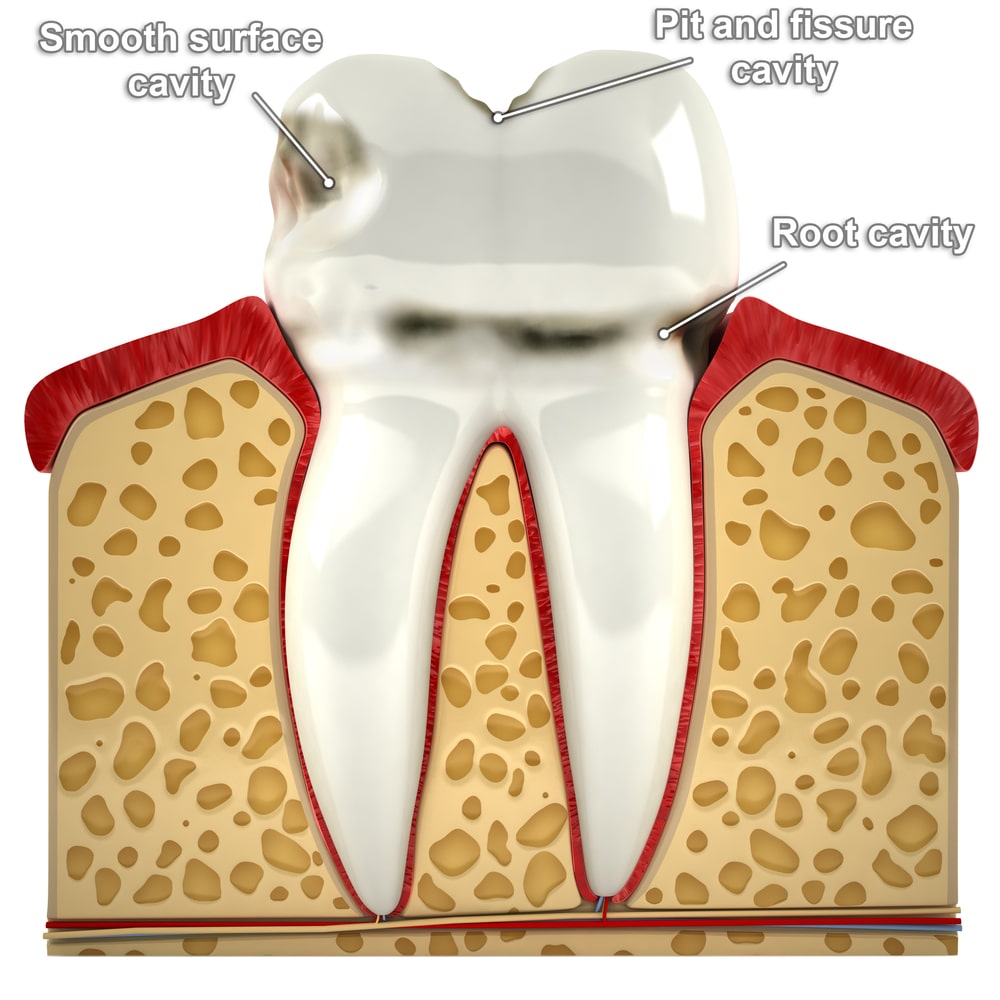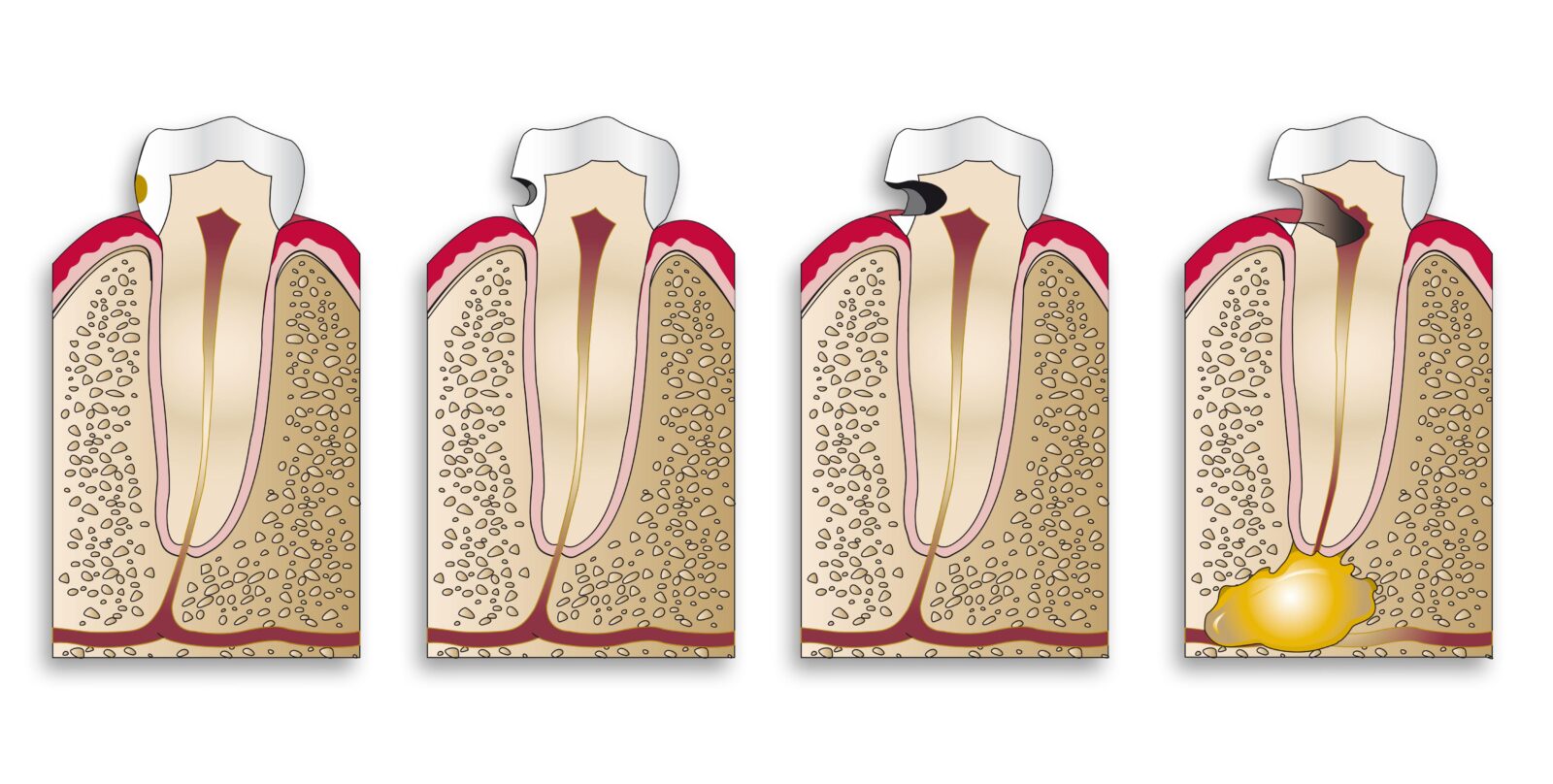If you’re like most people, you probably don’t think about cavities very often. But the fact is, cavities are a common dental problem for people of all ages. While regular brushing and flossing can prevent cavities, it is still very likely that you will experience a cavity at some point in your life. Therefore, it is important to know how long it takes for them to form so you can take steps to prevent them from getting worse. In this blog post, we will discuss the different stages of cavity formation and how long it takes an average cavity to form.
What is a cavity?

A dental cavity, also known as tooth decay or a carious lesion is caused by bacterial plaque buildup on the surface/interior of the tooth. The bacteria’s main food source is sugar which it gets from most forms of carbohydrates. This includes sticky foods with high amounts of sugar content like candy, cookies, donuts, cake and fruit juices to name a few. When these are consumed over an extended period of time, they are bound to cause problems for your teeth because acid produced by the bacteria will erode the enamel on your tooth. As the erosion continues over months or years it can eventually lead to the formation of a cavity.
There are three main types of cavities:
- The first type of cavity is called a pit and fissure cavity. This type of cavity forms on the chewing surfaces of your molars and premolars.
- The second type, called a Smooth-Surface Cavity, forms on the smooth sides of your teeth, usually in between the teeth.
- And lastly, there is a third type which is known as a Root Cavity and is found on the roots of your teeth. These cavities can occur when gum recession has exposed the tooth roots.
Stages of Cavity Formation:
Demineralization, enamel decay, dentin decay, pulp decay, abscess
Demineralization
This is the first stage of cavity formation and is reversible when caught early. Demineralization occurs when the acid produced by bacteria in your mouth dissolves minerals from your tooth enamel. This can lead to a loss of enamel surface and create white spots on your teeth. Your dentist can treat these white spots by using fluoride to re-mineralize the enamel. If left untreated, the demineralization will continue and lead to the next stage of cavity formation.
Enamel Decay
The enamel decay stage is when the demineralization process causes actual damage to the enamel surface of your teeth. The acid will eat away at the enamel and create small holes or pits in the surface. This can increase your risk for developing more severe cavities as the bacteria can now more easily access the softer dentin layer of your teeth. At this point, a composite filling will need to be used to restore the affected tooth.
Dentin Decay
The dentin decay stage is when the acid has penetrated through the enamel and reached the dentin layer of your teeth. The dentin is a softer layer that lies underneath the enamel and is composed of several microscopic tunnels that lead to the inside of the tooth. Once the acid reaches the dentin, it can allow stimuli to pass through the tiny tunnels and can cause tooth sensitivity. If left untreated, the decay can eventually continue to the pulp layer of your tooth.

Pulp Decay
The pulp layer is the innermost layer of your teeth and contains all of the nerve endings and blood vessels. Once the decay reaches this layer, it can cause a great deal of pain and discomfort. This is because it causes an infection known as pulpitis. Unfortunately, the only way to remove this infection is through a root canal. If left untreated, infection will continue to spread.
Abscess
The abscess stage is the most severe stage of cavity formation. An abscess is a pus-filled sac that forms at the base of the tooth roots as a result of the infection caused by the decay. The abscess will cause swelling and severe pain in the surrounding tissues and can potentially damage other teeth or bone if left untreated. The only way to treat an abscess is through extracting the affected tooth.
How long does it take a cavity to form?
Cavities can form over an extended period of time, depending on the types of foods you eat and how often you brush your teeth. In most cases, it takes years for a cavity to form, however it is also possible for cavities to form in a matter of months. It is important to note that once the decay has eaten through the enamel, the rate of decay increases. This is because the dentin and pulp layers are much softer than the enamel and decay can move through those layers faster.
In Conclusion
Cavities are decayed portions of the tooth that are caused by acid erosion of the enamel due to bacteria. There are five stages of cavity formation and most cavities form over an extended period of time. However, depending on the types of foods you eat and how often you brush your teeth, it is also possible for cavities to form in a matter of months. To learn more about cavities and your oral health, schedule an appointment with Sedation Dental Care at Raleigh today.
